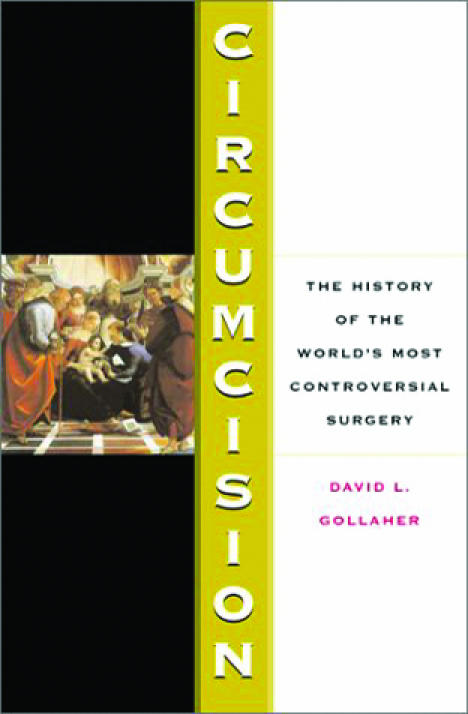 Circumcision: A History of the World's Most Controversial Surgery by David L Gollaher. Basic Books, £17.80, pp 260. ISBN 0 465 04397 6. Rating: ★★★★
Circumcision: A History of the World's Most Controversial Surgery by David L Gollaher. Basic Books, £17.80, pp 260. ISBN 0 465 04397 6. Rating: ★★★★
Male circumcision is the most commonly performed surgical operation in the United States. Data for 1996 reveal that no less than 60% of all US male infants were circumcised. In contrast, the rest of the industrialised world has much lower rates of circumcision. In Britain circumcision is performed only for religious reasons or to correct defined medical conditions. How, then, are we to account for such a large difference?
The strength of US historian David Gollaher's approach is that he locates circumcision practices throughout the ages within their social and anthropological context. What emerges is a highly readable account of how circumcision was viewed by such diverse groups as the ancient Greeks and the medieval church. The Greeks abhorred circumcision as it constituted a mutilation of the body, and the medieval church devoted much debate to the vexed question of whether Christ recovered his foreskin on his ascension to heaven.
But the history of circumcision is more than just a collection of slightly ribald stories. What I found most interesting was Gollaher's account of how in the late 19th century circumcision ceased to be the preserve of Jews and Muslims and was transformed, in the United States at least, into a necessary medical procedure that protected against the development of various diseases in later life. One consequence of the germ theory of disease was to see smegma, produced by the foreskin, as infectious material. What better way to cleanse the male body of disease than removing this harbour of infection.
Circumcision also became an important part of the medicalisation of childbirth. For Gentiles, having one's foreskin removed was a sign of having been delivered by a doctor rather than a midwife, of benefiting from the safe and germ-free confines of the hospital. Doctors also benefited financially, as they could charge for an additional surgical procedure and circumcised infants spent longer in hospital.
As one might expect, Gollaher is strong on the rise of the US anti-circumcision movement from the 1970s onwards and shows quite clearly how the power struggle between the medical lobbies for and against circumcision resulted in a series of conflicting reports from the American Academy of Pediatrics. He has less to say on the UK situation, and I suspect that a historical study of circumcision in 20th century Britain is in order.


